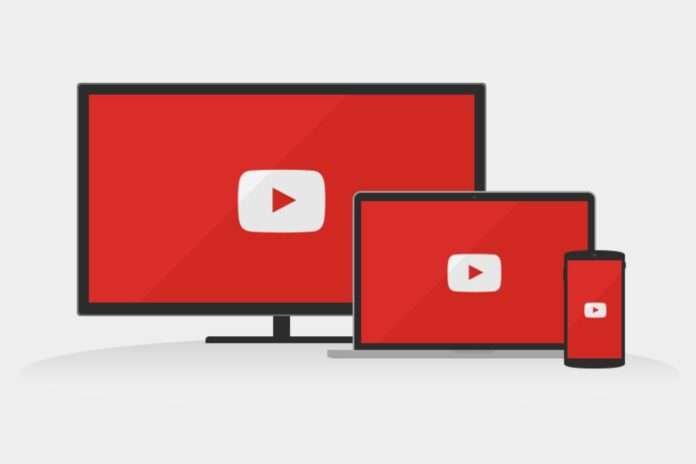Quick Links
A few years ago, YouTube began offering a new service called YouTube Red – a paid-for subscription service that essentially allowed people to watch ad-free YouTube videos, among other things. However, in May 2018, Google dropped the brand name and re-launched the service as YouTube Premium. Here’s what you need to know about YouTube Premium, including how it works.
- What is YouTube TV and how does it work?
- What is Android TV, how does it work, and which devices offer it?
What is YouTube Premium?
YouTube Premium is a paid membership, available in certain countries, that gives you an ad-free, feature-rich (offline viewing), and enhanced experience across many of Google’s video and music services, like YouTube, YouTube Music, YouTube Gaming, and YouTube Kids.
How does YouTube Premium work?
YouTube Premium is ad-free and that’s its main draw for those who can’t stand watching adverts or spend time waiting to skip ads before getting to the actual content they want to watch.
Since Google-owned YouTube makes a lot of its money from ads, it can’t really remove them without making you pay up. It also said this goes toward helping artists make money. By allowing the viewer to pay, flitting between videos will no longer require waiting around for ads to finish. That applies to anywhere the paid-for account is signed in.
So, if you’re logging in on a smart television, you’ll be able to watch videos instantly, without interruptions. Also, this ad-free experience extends to other YouTube-branded apps, such as YouTube Music, YouTube Gaming, and YouTube Kids.
YouTube Premium works offline and in the background too
Another feature of YouTube Premium that adds more value to the subscription price is offline viewing on a phone or tablet, meaning downloading a movie to watch when on the train should be easy now. On top of that, you’re able to play videos in the background. This is the area that may sway some people over, say, Spotify, as it means video access with the ability to use the app as a music player.
Access to Play Music and YouTube Music Premium
Originally, if you shelled out for YouTube Red, you’d get what was called a Google Play Music (later YouTube Music too) subscription for free. And this worked vice versa. Play Music allowed for storage of up to 50,000 of your offline songs to be streamed, access to a 35 million song catalogue, offline listening, and everything was, of course, ad-free. As for YouTube Music, it recently also got a revamp.
The new music service rolled out in May 2018 to the US, Australia, New Zealand, Mexico and South Korea, and then it came to the UK and select other territories in June 2018. It’s a mobile app and desktop player that gives you access to millions of songs. If you can already find it as a video on YouTube, you will be able to find it as a streamable track. But you also get access to music videos.
YouTube Music is available to use for free, but this has ads that will play every few songs. You also won’t be able to download music for offline listening on this tier either. For ad-free music and downloads, you will need to subscribe to YouTube Music Premium. Music Premium costs $9.99 a month (?9.99 a month in the UK) – unless you already subscribe to YouTube Premium.
That’s right, YouTube Premium comes with YouTube Music Premium included.
YouTube Premium Originals
Lastly, another plus for the YouTube Premium subscription is new content. YouTube provides exclusive videos for subscribers, which everyone else will not have access to. These are described as “new, original shows and movies from some of YouTube biggest creators”.
YouTube Premium benefits your favourite creators
One of the lesser-known benefits of YouTube Premium is the benefit it has for YouTube creators. Did you know that your favourite YouTubers earn more money when people with a YouTube Premium subscription watch their content compared to what they get from “normal” ad-viewing watchers?
“Creators are the heart and soul of YouTube. To ensure that they’re compensated for their work, we share ad revenue with them when you watch ads on YouTube. If you’re a YouTube Premium member, you won’t see ads, so we share your monthly membership fee with creators. Best of all, the more videos you watch from your favourite creators, the more money they make.”
How much is YouTube Premium?
Initially, YouTube Red subscription service had a $9.99-per-month price tag.
However, because of the new bonus services, like YouTube Music Premium, YouTube Premium costs $11.99 a month (?11.99 in the UK). You can also pay $17.99 a month (?17.99 in the UK) to give up to six family members in same household access to YouTube Premium.
It is also possible to pay for YouTube premium on an annual basis if you prefer.
What benefits do you get with YouTube Premium?
There are several benefits to YouTube Premium that make it worth subscribing to aside from the obvious. These include:
- The ability to watch YouTube content without adverts
- Access to YouTube Music Premium at no extra cost (again, without ads)
- The ability to download YouTube videos to watch them offline
- The ability to use YouTube, YouTube Music and YouTube Kids mobile apps with your screen off (background play)
- Access to continue watching YouTube videos right where you left off
- Use of Picture-in-picture (PiP) mode to watch YouTube videos while you’re using other apps on your device
- Options to change video quality but also to watch at a higher bitrate as standard
- Access to other special features including Afterparties & live chat, Smart device integration, Smart downloads and Co-Watch with Google Meet
Sign up for YouTube Premium
- Visit youtube.com/premium on your computer or mobile device.
- Sign in to the Google account you’d like to start your membership on.
- Click Try it free, or click Get YouTube Premium.
- Select the payment method you wish to use or add a new payment method.
- Click Buy to complete the transaction.
Post Disclaimer
The information provided in our posts or blogs are for educational and informative purposes only. We do not guarantee the accuracy, completeness or suitability of the information. We do not provide financial or investment advice. Readers should always seek professional advice before making any financial or investment decisions based on the information provided in our content. We will not be held responsible for any losses, damages or consequences that may arise from relying on the information provided in our content.



